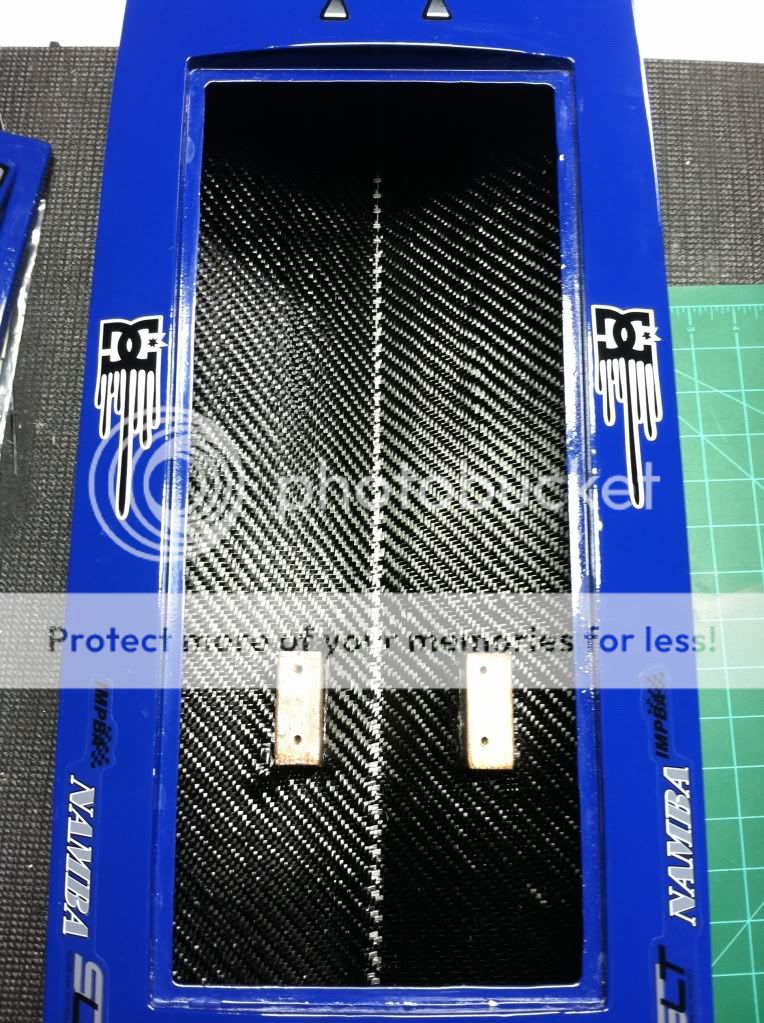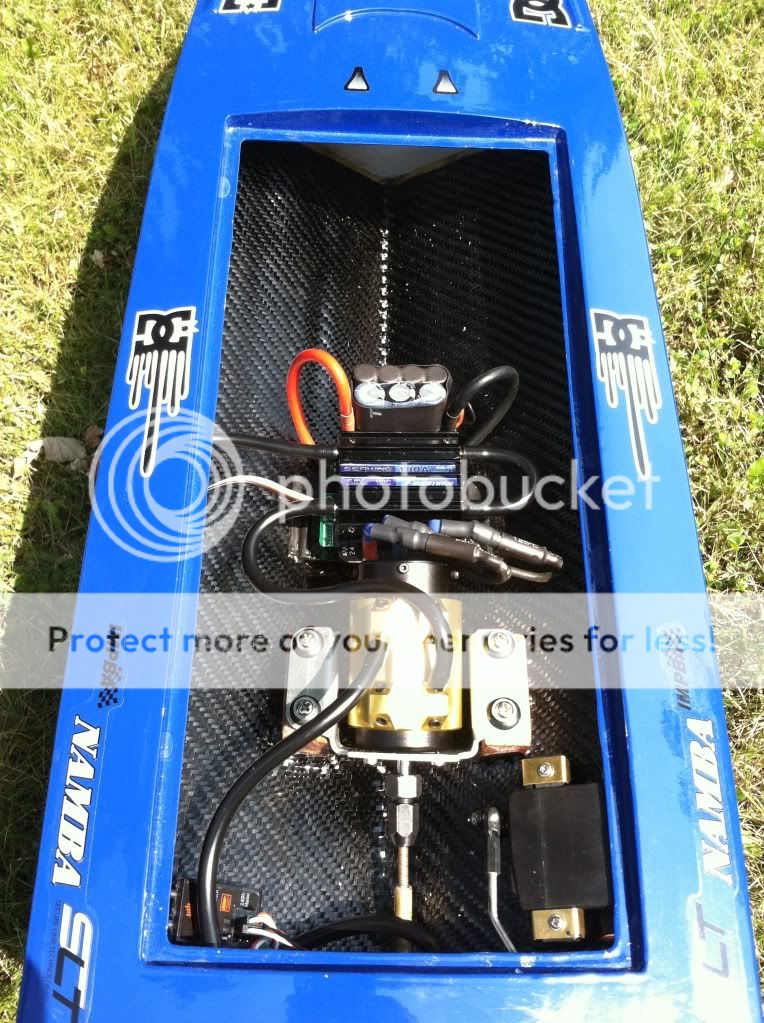I've been debating if I want to have a CF inlay done in my Revolt. The cost isn't bad (shipping is a little harsh), and I'm a little nervous about doing it myself in case I mess it up. Do you guys think its necesary on a Revolt? Obviously the extra strength (and the bling factor) are my "pros" for wanting to have this done.
Carbon Fiber Inlay for Revolt 30 FE - worth the effort/cost?
Collapse
X
-
IMO not worth it, it's plenty strong enough for the stock setup, if you are planning on upgrades for more speed I'd start with a better quality hull.
They are built to a price point intended to run the stock setup, all you would do is find the next weakest part of the hull.
I ended up putting the stock setup back into my Motley Crew before I did any more damage to it, couldn't handle the blow overs at the speeds I was hitting. The Revolt isn't any thicker a layup than the motley.If my boats upside down then who owns the one I thought I was driving the last two laps?
-
Hey Joel,
That looks nice, do you have any tips or tricks to getting a correct size and finish laying carbon into a hull like this? I did one but mine didn't turn out half as nice. I don't like working with this carbon stuff.
Later
Mike BallComment
-
Jeff, Does the boat really need it.. No. But it would be a good experience if you decide to really want to get into the hobby. The extra weight won't hurt.
Mike, My tips for laying carbon down. Use a piece of paper to get make a template of how you want the CF cut. Use really sharp scissors to cut the cloth. Obviously you want to hand the CF as little as possible so the edges don't unravel. Roughen up the inside of the hull and brush in some finishing epoxy where the CF will be laid down. Don't worry if it's a little uneven or pooled. Carefully lay the cloth in the boat and gently get her in the proper position. I usually first press down in the center, then along the keel and then up the sides. I'll then press the CF into the creases and voids and hold it for a few seconds until it gets saturated with epoxy and holds in place. Then I'll blot some more epoxy in the thin spots where the cloth is not saturated. Then I take a mini foam touch up roller that I got from the paint store and start rolling the CF cloth. The roller will spread the epoxy evenly and soak up the excess without pulling the cloth out of alignment. Start from the keel and work you way up the sides to remove any bubbles. Dab some more epoxy in areas that are not saturated and go over it again with the roller. That's about it. The foam roller is my secret weapon. Others may do it differently the this method works like a charm for me. I've done about a dozen boats like this and have always been happy with the results. Hope this helps.Mike Chirillo
www.capitolrcmodelboats.com
Comment
-
Mike, my way is similar to Chilli's, except I use the dry method. I make a paper template that I use to cut out my cloth. I then lay the cloth on the prepped surface first, then I wet out the cloth. You have to be careful not to use too much resin this way by spreading it thin and allowing it to soak through the cloth. I then use a grooved metal roller to smooth out the cloth and a squeegee to remove excess resin. When using woven cloth I usually do two layers where the patterns are laid in different orientations."There's nothing else I really want to do other than get up and build boats." - Mike FioreComment
-
Comment
-




Comment